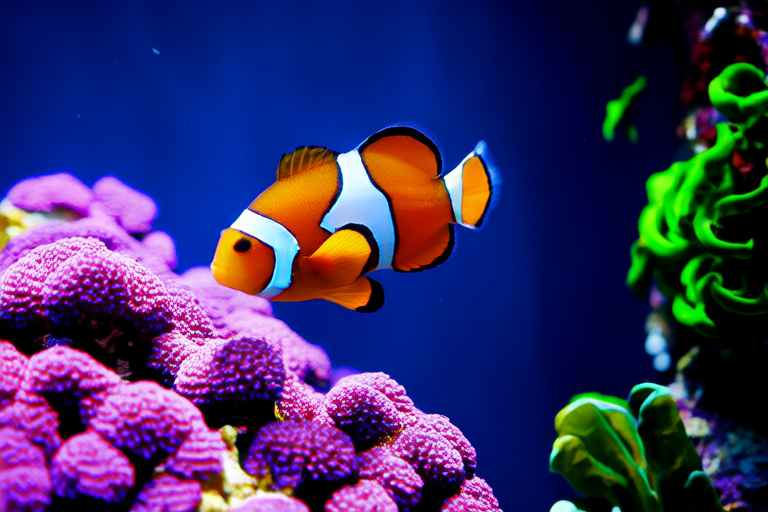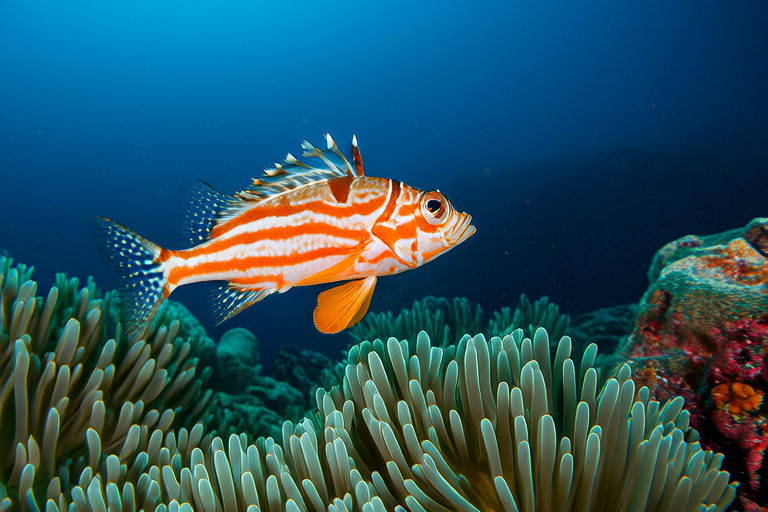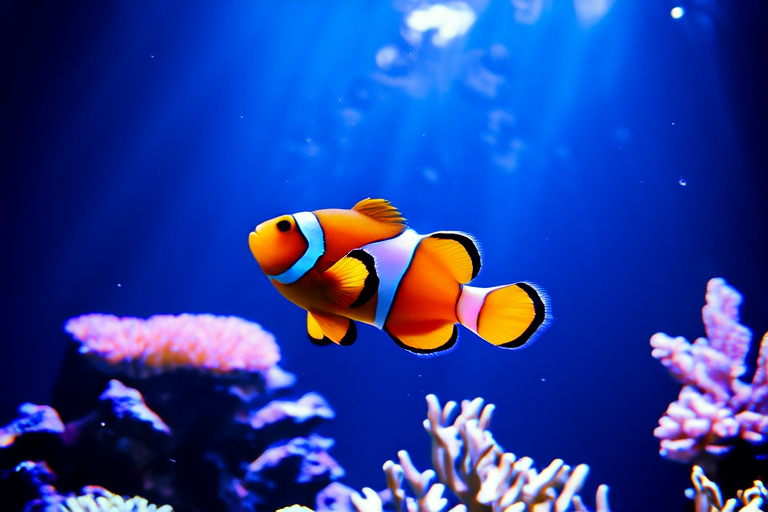
From the Coral Reefs to Your Tank: The Complete Guide to Clownfish
Introduction:
Clownfish, with their vibrant colors and playful personalities, have captured the hearts of aquarium enthusiasts worldwide. Made famous by the movie “Finding Nemo,” these fish are not only popular but also incredibly charming. Their ability to thrive in diverse environments, coupled with their striking appearance, makes them a favorite among both novice and seasoned aquarists. This guide will delve into the world of clownfish, from their natural habitats to thriving in home aquariums, providing you with all the information you need to keep these delightful creatures happy and healthy.
Natural Habitat and Symbiotic Relationships:
Native to the warm waters of the Pacific and Indian Oceans, clownfish inhabit tropical coral reefs. These ecosystems are bustling with life, offering a rich tapestry of colors and textures. One of the most fascinating aspects of clownfish is their symbiotic relationship with sea anemones. Sea anemones, with their poisonous tentacles, provide a safe haven for clownfish, protecting them from predators. In return, clownfish offer nutrients to the anemone through their waste and help to lure prey within reach of the anemone’s tentacles. This mutualistic relationship is a testament to the intricate balance of marine ecosystems.
Different Species of Clownfish:
There are over thirty recognized species of clownfish, each with its own unique characteristics. The most well-known is the orange-and-white-striped Amphiprion percula, often referred to as the true clownfish or Nemo. Other popular species include the maroon clownfish (Amphiprion melanopus), known for its reddish-brown coloration, and the tomato clownfish (Amphiprion frenatus), recognizable by its deep red hue. Each species has distinct patterns and sizes, making it essential to research the specific needs and behaviors of your chosen clownfish before bringing them home.
Ideal Tank Setup:
To ensure your clownfish thrive, creating the right environment in your tank is crucial. Start with a minimum tank size of 30 gallons for a single pair, increasing the volume if housing multiple pairs or additional species. Clownfish prefer a pH level between 8.1 and 8.4, with a temperature range of 76 to 82 degrees Fahrenheit. Regular water changes and efficient filtration systems are necessary to maintain water quality.
For tank decorations, include live rock and plenty of hiding spots. Live rocks not only provide a more natural environment but also aid in biological filtration. Hiding spots can be created using caves, PVC pipes, or artificial plants. It’s important to ensure there are enough spaces for each clownfish to establish its territory without causing stress.
When choosing tank mates, opt for peaceful species that won’t compete for food or space. Suitable companions include other clownfish, small shrimp, and certain species of tangs and blennies. Avoid aggressive fish like triggers or large angelfish that may pose a threat.
Feeding and Breeding:
Clownfish are omnivorous, feeding on a variety of foods including brine shrimp, mysis shrimp, and flakes. A balanced diet ensures optimal health and vibrant colors. Feed your clownfish twice daily, providing small portions to prevent overfeeding and water pollution.
Breeding clownfish can be a rewarding endeavor for experienced aquarists. To encourage breeding, maintain stable water conditions and provide ample hiding spots. When ready to breed, female clownfish lay eggs on a flat surface, typically near their anemone or a designated area in the tank. Males then fertilize the eggs and guard them until they hatch. After hatching, larvae must be raised in a separate rearing tank with specialized care.
Common Health Issues:
Like any pet, clownfish are susceptible to various health issues. Common ailments include white spot disease, bacterial infections, and parasitic infestations. Early detection and prompt treatment are key to preventing these issues from escalating. Regularly inspect your clownfish for signs of distress, such as lethargy, loss of appetite, or physical abnormalities. If you notice any concerning symptoms, consult with a veterinarian specializing in aquatic animals for proper diagnosis and treatment.
Maintaining a Healthy Environment:
Creating a healthy and happy environment for your clownfish requires ongoing attention and commitment. Regular maintenance tasks include weekly water changes, monitoring water parameters, and ensuring adequate filtration. Additionally, providing a varied diet and enriching the tank with appropriate decor contribute to the overall well-being of your fish.
As a responsible aquarist, it’s vital to understand the environmental impact of keeping marine species as pets. Choose captive-bred clownfish whenever possible to minimize the strain on wild populations. Educate yourself about the challenges faced by coral reefs and support conservation efforts to protect these vital ecosystems.
Conclusion:
In conclusion, clownfish are captivating creatures that bring joy and wonder to aquariums around the world. By understanding their natural habitat, species diversity, and specific care requirements, you can create a thriving environment for these delightful fish. With proper attention to water conditions, tank setup, feeding, and breeding, you’ll ensure your clownfish lead healthy and happy lives. Embrace the responsibility of caring for these beautiful creatures and enjoy the rewards of having these charismatic fish in your home.






